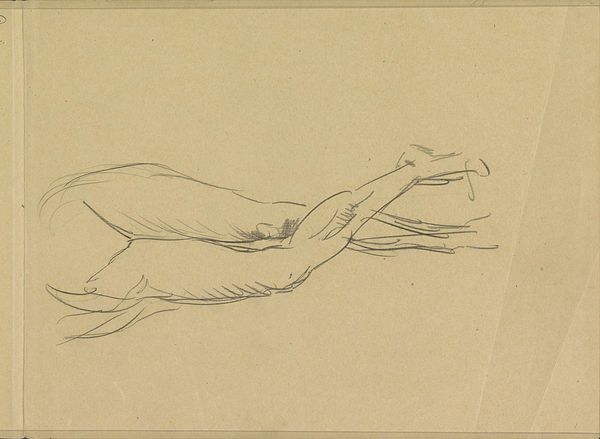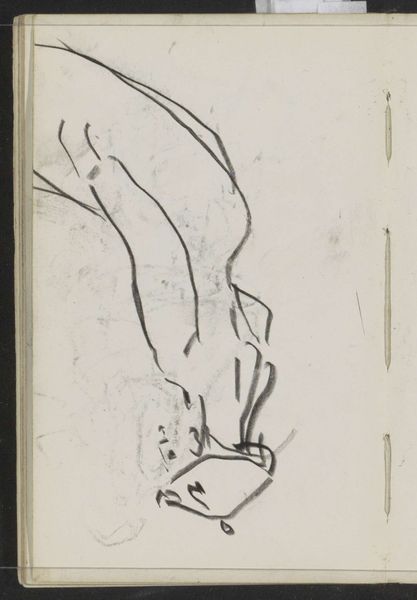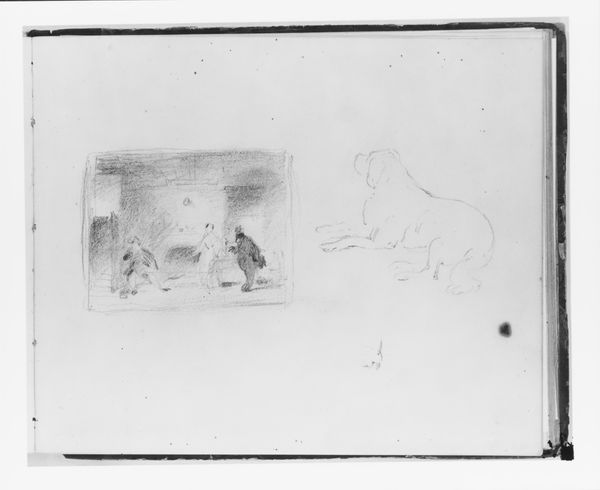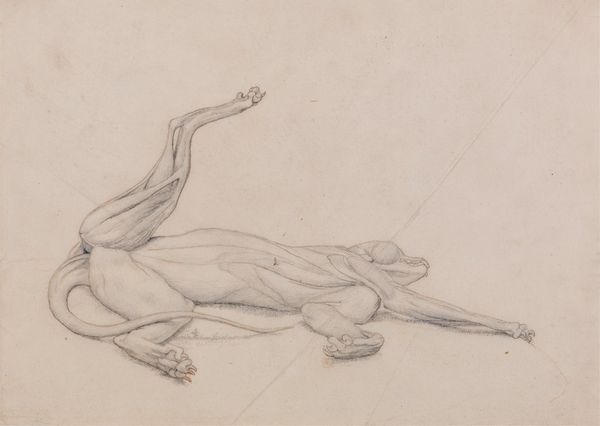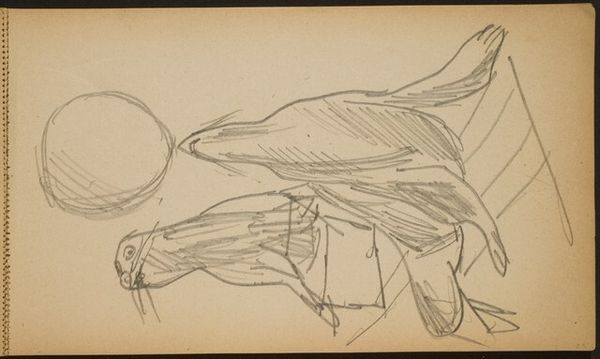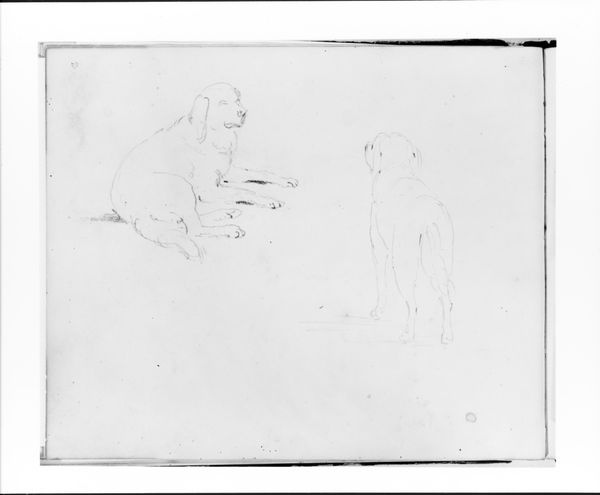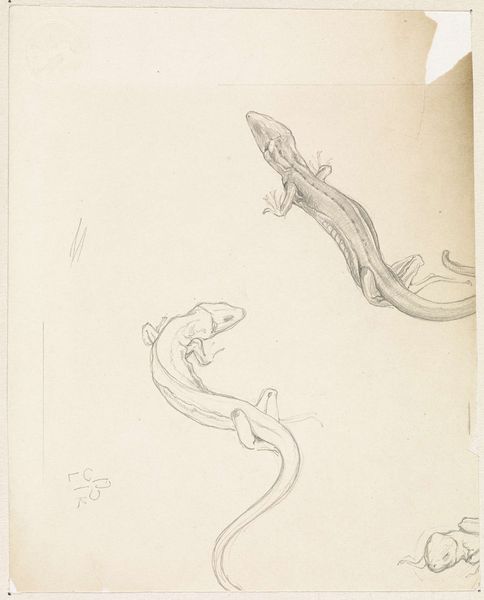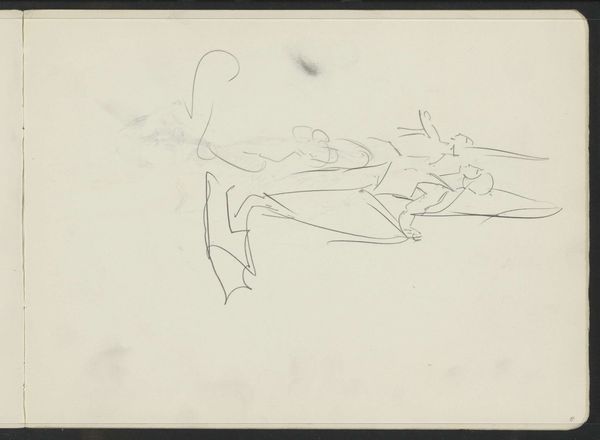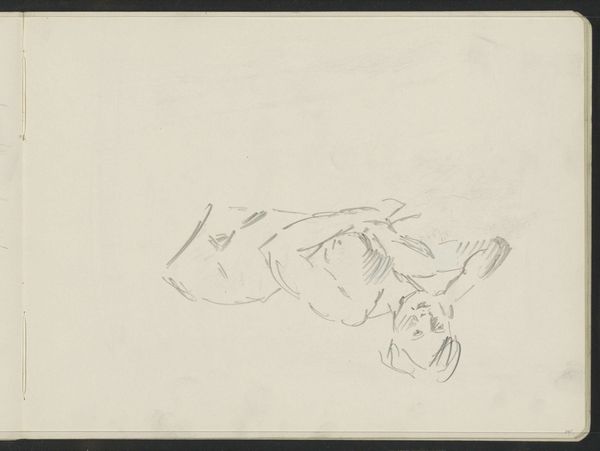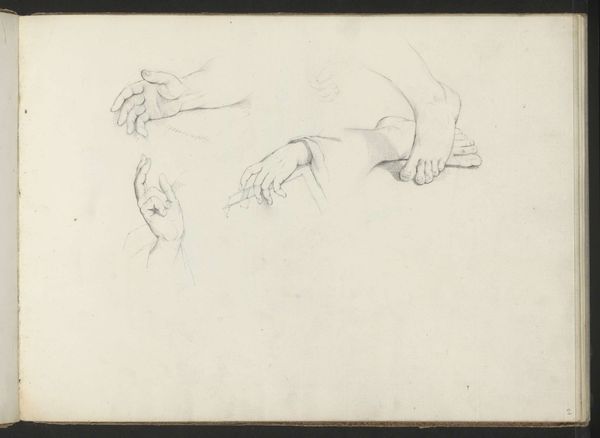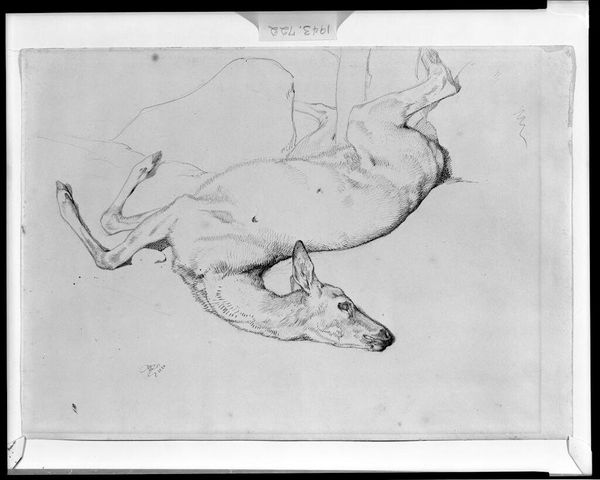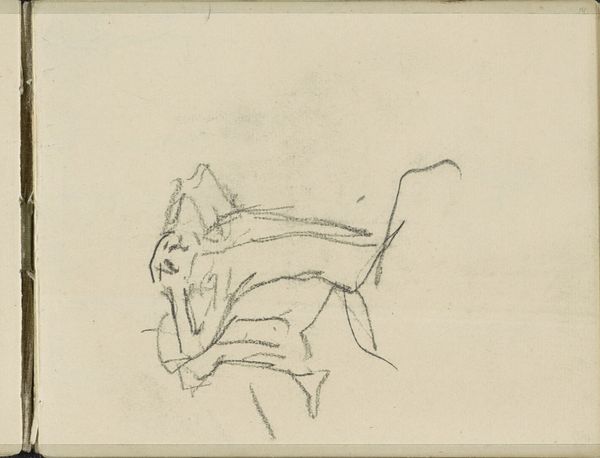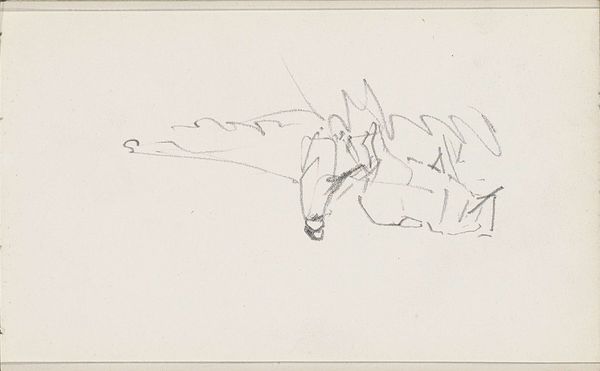
Boy with Greyhound Dog (from Sketchbook) 1811 - 1893
0:00
0:00
Dimensions: Dimensions unavailable
Copyright: Public Domain
Curator: Right in front of us we have “Boy with Greyhound Dog” from a sketchbook by John William Casilear. Casilear lived from 1811 to 1893, but we don’t know exactly when this pencil sketch was made, sometime within those years, I imagine. What strikes you first about it? Editor: Honestly? It feels like a dream. It's hazy, ephemeral, as if this boy and his speedy dog are figments of some distant memory, or fleeting visions from another world. It has this ethereal, romantic vibe about it. Curator: That dreamy quality probably comes from the medium: simple graphite on paper. This piece exemplifies the 19th-century artist’s deep engagement with, and dependency on paper as a readily available commodity—especially in a place like New York. How readily available were dogs at that time to those of lesser economic means? Was a greyhound more indicative of the patron or commissioner of the work, speaking to the dog as a type of cultural currency? Editor: I am completely drawn to the minimal style. It really distills motion to its purest essence. That sprightly boy holding a triangular something is almost completely without definition! Perhaps its merely an evocation, a symbol of forward progress. Also, did the artist consider the race, class, or breed, and consider their interactions? Were such dogs affordable? The question becomes, what’s he actually trying to get at here? Curator: He was very involved in the Hudson River School, whose work focused on the effects of industrial labor practices and consumer culture on nature. If one considers dogs to be a sort of natural or wild entity that exists on the boundary of civilization, then dogs that became luxury objects serve as strong artistic subject. The boy then, has become subservient to the object of this wildness, and not vice versa. Editor: That interpretation makes this image all the more powerful. Curator: Indeed, thinking about art through this lens—through the context of commodification and material culture opens up some great points of departure. Editor: Yes, certainly does give me something to ponder, on my walk home and perhaps later, in dreams.
Comments
No comments
Be the first to comment and join the conversation on the ultimate creative platform.
